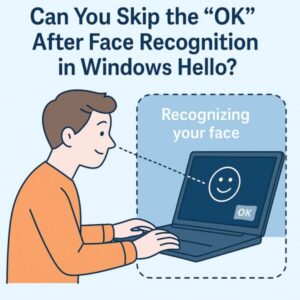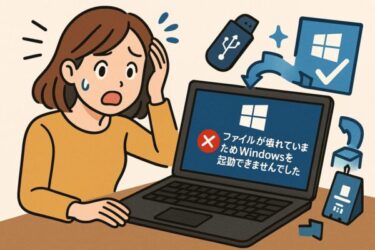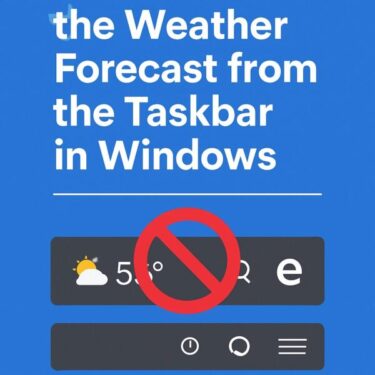Windows Hello face recognition is fast and convenient—but have you ever wondered why you still have to press the “OK” button after your face is recognized?
“Why doesn’t it log me in automatically?”
“Is there a way to skip pressing OK?”
If you’ve ever asked yourself these questions, you’re not alone.

In this guide, we’ll explain why the “OK” button appears after face recognition and whether there’s any way to skip it.
Is Face Recognition Safe?
Yes. Windows Hello face recognition is considered more secure than passwords or even fingerprint scanning. It uses an infrared 3D camera to detect depth and contours—making it resistant to spoofing with photos or videos.
Even in rare cases like identical twins, Windows Hello uses depth and reflection data to distinguish users. It’s trusted in enterprise environments and is FIDO2 certified.
What Is the “OK” Button After Face Login?
When Windows Hello detects your face, it may still ask you to press an “OK” button. This is a confirmation step—Windows does not fully complete login automatically after face detection.
Common Causes of Face Recognition Failure
- Obstruction or dirty camera lens
- Too dark or backlit environment
- Inconsistent face angle during login
- Major appearance changes (glasses, mask, haircut)
Each failed recognition may result in an extra step like pressing OK. To avoid that, keep your camera clean, maintain consistent posture, and consider re-registering your face if your appearance changes.
Can You Automatically Skip the “OK” Button?
By default, Windows does not allow skipping the “OK” button completely.
However, you can make it behave almost like automatic login using the methods below.
1. Set Face Recognition as Default Sign-In Method
- Go to Settings → Accounts → Sign-in Options
- Enable “Facial recognition (Windows Hello)”
- Check “Use this method next time you sign in”
2. Disable Fast Startup
When “Fast Startup” is enabled, you may still see the OK prompt after waking the device. To disable:
- Open Control Panel → Power Options
- Select “Choose what the power buttons do”
- Click “Change settings that are currently unavailable”
- Uncheck “Turn on fast startup (recommended)”
3. Use a Script to Send Enter Key (Not Recommended)
Using tools like AutoHotKey, you could write a script to automatically press Enter after login. However, this is not recommended due to security risks and potential system instability.
⚠️ The “OK” Button Cannot Be Fully Disabled
As of June 2025, there is no supported way to fully disable the “OK” prompt in Windows Hello. No registry tweak or group policy currently controls this behavior.
Device and Version May Affect Behavior
On some models like Surface, auto-login may work more seamlessly depending on firmware and Windows version (e.g., 23H2 vs 24H2). Keep your device updated for best results.
What If Face Recognition Doesn’t Work?
If your camera is broken or recognition fails temporarily, you can always sign in with your PIN or password.
Click “Sign-in Options” on the login screen to manually choose PIN or password when face login fails.
If your built-in IR camera is not working, you can continue using Windows Hello with a supported external IR camera.
▶ Check Windows Hello-compatible external IR cameras
This site uses affiliate links. If you buy through them, we may earn a small commission—at no extra cost to you. Thanks for your support!
Tips for More Reliable Face Login
To improve recognition and reduce “OK” prompts:
- Wipe your camera lens regularly
- Use your PC in a well-lit area
- Avoid heavy backlight or low-light environments
- Re-register your face if your appearance has changed
Small daily habits can make your login faster and more reliable.
Summary
The “OK” button after Windows Hello face recognition can’t be removed entirely, but it can be minimized through smart settings and habits.
- Set face login as the default sign-in method
- Disable fast startup
- (Optional) Use a script—at your own risk
If you’re tired of pressing OK every time, try these tips to streamline your login experience.
Related Articles:
▶Wi-Fi Connected but No Internet? Fix It with These 7 Simple Steps
▶ Windows Error Flashes and Disappears? Here’s How to Find Out What Really Happened
▶ Windows 11 24H2 Update Broke Your Mouse or Keyboard? Here’s How to Fix It Fast


